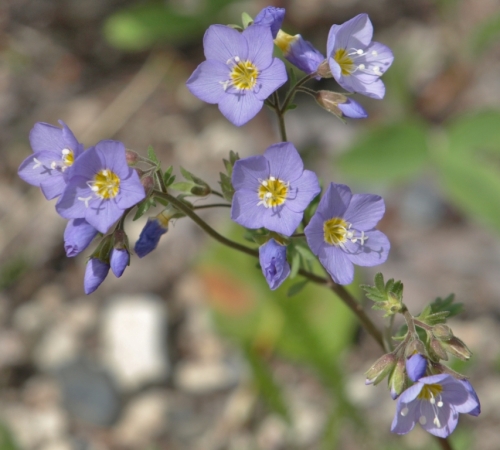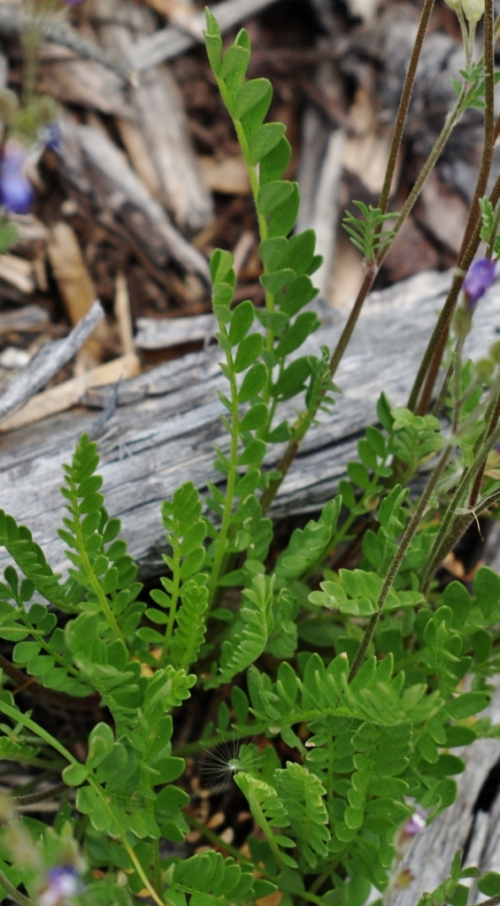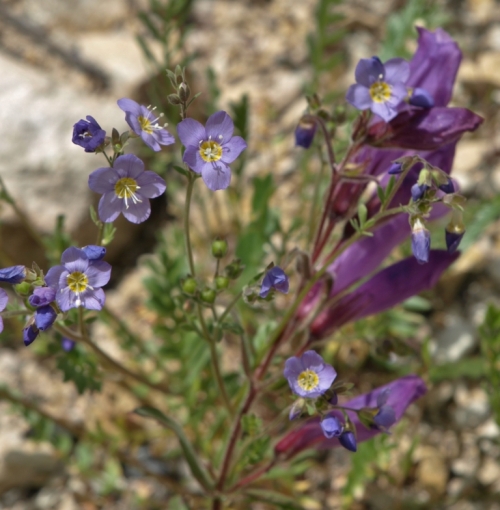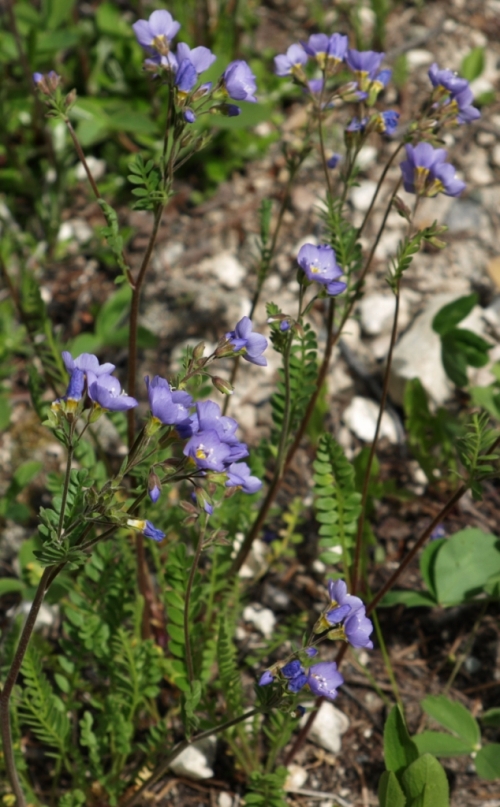
Showy Jacob’s Ladder, Polemonium pulcherrimum. Not terribly common in our region, but there is a colony on Bull Mountain north of Williams Lake, where these photos were taken on June 10, 2014. I have also seen it growing in various rocky places throughout the higher elevation areas of the province, and on the Chilcotin Plateau. Image: HFN
Perennial. Zone 1/2. Polemoniaceae. Western North American, California to Alaska, higher elevations from sub-alpine forest to past the timberline.
Lewis J. Clark explains the origin of the genus name – with a touch of opinionism! – in the Polemoniaceae (Phlox Family) section of Wild Flowers of British Columbia (1973):
The family derives its name from the Greek polemos, war. Pliny (Roman soldier, statesman, and naturalist) states that “polemonia” was given this name from having caused a war between two kings, each of whom claimed the honour of first having discovered its medicinal virtues. The causes of some recent wars make no better sense. Incidentally, no member of the family is now used for any medicinal purpose.
The species name, pulcherrimum, also comes from the Greek, for handsome or beautiful. English botanist William Jackson Hooker named this plant after seeing a specimen collected by Thomas Drummond during an exploration of the Canadian Rockies in 1825-27.

Foliage, Polemonium pulcherrimum. Rather egg-shaped leaflets are arranged in pairs on a central stem. The fancied resemblance of the foliage arrangement to a ladder is the origin of the common name, from the Biblical Jacob, who dreamed of a ladder reaching to heaven, with angels climbing to and fro. In this case, the blue of the flowers might be seen as to represent the sky, wherein Heaven is traditionally thought to be located… Image: HFN
This very pretty small plant moves happily into the garden, though its preference for excellent drainage makes it best suited for a slope or rockery position. Plants are quite variable in height and spread, ranging from 6 to 18 inches in eight. Flower stems arise from a basal cluster of the leaves, and bloom through late May well into June.
Small, pale blue-lavender flowers have vivid yellow eyes and contrasting white stamens, and are diligently visited by various species of pollinating bees.
Very cold hardy, and self sows modestly where happy. Easy to start from seed, which is the most eco-friendly way to bring the plant into cultivation. Look for the distinctive leaves, which will support the aging flower stems topped by clusters of pointed seed capsules full of ripe seed in mid-summer.
Best in full sun, or very light shade. Though a tough little wildflower, it is not particularly drought tolerant, preferring a steady supply of summer moisture to perform its best.

Bull Mountain, June 10, 2014. Polemonium pulcherrimum and pussytoes (Antennaria sp.) t0 to give an idea of the scale of this delicate flower. Image: HFN

Beautiful companions – we found Showy Jacob’s Ladder blooming alongside Shrubby Penstemon (Penstemon fruticosus var. scouleri) on Bull Mountain, June 10, 2014. Image: HFN

Plant habit when growing in fractured shale on the edge of Douglas fir/lodgepole pine forest. Companion plants in this area include Penstemon fruticosus var. scouleri, Pussytoes (Antennaria sp.), Anemone multifida, Kinnickinick (Arctostaphylos uva-ursi), and Indian Paintbrush (Castilleja sp.) Image: HFN